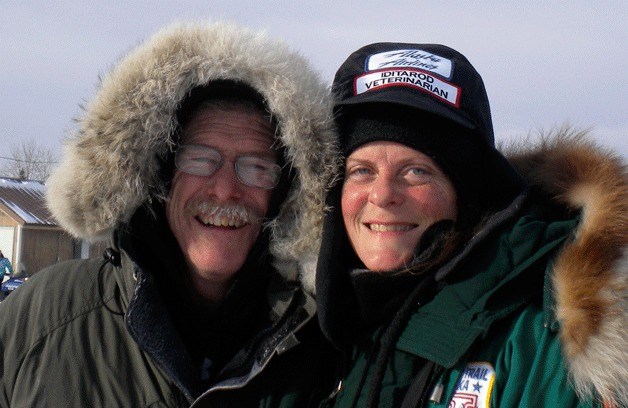You don’t travel across 1,131 miles of frozen sea and tundra without needing some medical attention.
For the huskies and malamutes that comprise the sled-dog teams competing in the Iditarod Trail Sled Dog Race, Jean Dieden is just what the doctor ordered.
Actually, she is the doctor. Dieden has volunteered as veterinarian for the Iditarod for 20 years. This year’s race starts Sunday.
The minimum age for mushers is 18, and Dieden said there would be some mushers there who weren’t born when she first volunteered at the race.
While Dieden, a Clinton resident since 1999, doesn’t want that fact to tip off her age, it demonstrates her commitment and passion for a race called the “Last Great Race on Earth.”
The Iditarod begins in Willow, Alaska, outside Anchorage, and ends in Nome. There are two routes — northern and southern — used alternately each year. This year the race takes the southern route, which has 27 checkpoints along its 1,131-mile path.
Dieden’s veteran status was evident by her not packing the afternoon before her midnight flight on Monday, Feb. 28. Most of the equipment she needs stays packed all year, so she only had to double-check that everything was still there, leaving only her personal packing.
The allure of the race first brought her to Anchorage in 1992. Growing up in New England, she remembers watching the race on ABC’s “Wide World of Sports.”
Dieden has shown dogs since her childhood, and continues to enter her wire-haired dachshunds in breed, agility and obedience shows.
She loves her dachshunds, but sled dogs are in an entirely different class, Dieden said.
For example, sled dogs require between 10,000 and 12,000 calories per day.
The official 2011 Iditarod rulebook states, in Rule 1, that for a musher to qualify, he or she must complete two approved qualifying races of an accumulated total of at least 500 miles since July 1, 2008. Most dogs go through at least 1,000 miles of training before they compete in the Iditarod, according to Dieden, who is a veterinarian at emergency clinics in Lynnwood and Seattle.
“They’re trained and conditioned to be, basically, world-class athletes,” she said. “They’re bred, and the dogs are selected based on their ability to perform well.”
Dieden will volunteer at the race for 17 days. She’ll be one of about 40 veterinarians at the race, who come from aound the globe to volunteer in freezing temperatures in the Alaskan winter.
“It’s definitely a gathering, where we get together and get involved with something outside of our normal existence,” Dieden said.
From four to eight veterinarians tend to each checkpoint during the race, and they leapfrog to the next station after the last team has checked in.
According to the race rules, teams are required to sign in at each checkpoint before continuing, and have three mandatory stops (one 24-hour and two eight-hour rests).
Being on the veterinary side, Dieden disagrees with critics of the Iditarod. People for the Ethical Treatment of Animals (PETA) spearheads an anti-animal-abuse campaign each year, and has described the Iditarod as “a long, grueling race that has become synonymous with animal abuse, causing hundreds of injuries and deaths.”
Last year, the Anchorage Daily News reported that no dogs died during the race. That’s at least in part due to the efforts of Dieden and the other veterinarians. Over the course of her two decades at the race, she has observed many improvements.
“It has improved tremendously,” she said. “The dog care and the logistics of the race have improved light years from what was known back then.
“Our concern has always been how can we do it better, how can we make it safe,” she added.
Dogs may be removed and replaced on a sled team at the checkpoints. The rules also guard against animal abuse: “There will be no cruel or inhumane treatment of dogs. Cruel or inhumane treatment involves any action or inaction, which causes preventable pain or suffering to a dog.”
Treating the world-class sled dogs brought her to the Iditarod. The people she met and continues to meet keep her coming back to the race.
“It’s like a family reunion,” she said.
The Iditarod begins on Sunday, March 6 after a ceremonial start on March 5.



